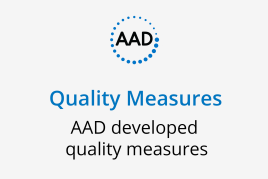Vitamin D
Vitamin D stats and facts
The American Academy of Dermatology recommends that healthy adults should obtain an adequate amount of Vitamin D from a diet that includes foods naturally rich in vitamin D and/or foods/beverages fortified with vitamin D.
Because ultraviolet rays from the sun and tanning beds can cause skin cancer, the American Academy of Dermatology does not recommend getting vitamin D from sun exposure or indoor tanning.
The U.S. Department of Health and Human Services and the World Health Organization’s International Agency of Research on Cancer panel have declared UV radiation from the sun and artificial sources, such as tanning beds and sun lamps, to be a known carcinogen (cancer-causing substance).1,2
Unprotected exposure to UV rays from the sun or indoor tanning devices is a known risk factor for the development of skin cancer, including melanoma, the deadliest form of skin cancer.2-8
There is not a safe level of UV exposure from the sun or indoor tanning devices that allows for maximum vitamin D synthesis without increasing skin cancer risk.
To protect against UV-induced skin cancer, the AAD recommends a comprehensive sun protection plan that includes seeking shade, wearing protective clothing, and applying a broad-spectrum, water-resistant sunscreen with an SPF of 30 or higher to all skin not covered by clothing.9,10
Vitamin D is critical for bone health, however, there is insufficient evidence to suggest its role in influencing or reducing the incidence of other diseases like certain types of cancer, neurologic disease, infectious disease, autoimmune disease, or cardiovascular disease.15,16
The National Academy of Medicine, formerly the Institute of Medicine (IOM) concluded that the evidence for associating vitamin D status with health benefits other than bone health was inconsistent, inconclusive as to causality and insufficient to inform nutritional requirement.11-12
Research has also shown that individuals with darker skin tones may be at increased risk for lower levels of vitamin D.13-14
Because the amount of vitamin D a person receives from the sun is inconsistent and increases the risk of skin cancer, the IOM’s RDA was developed based on a person receiving minimal or no sun exposure.
Research has shown getting too much Vitamin D can cause potential harm you.15,17
If you have questions about how much Vitamin D you are getting or what your Vitamin D level should be, talk to your doctor.
*The RDA is the intake that covers the needs of 97-98% of the healthy, normal population.18
Related AAD resources
1 NTP (National Toxicology Program). 2021. Report on Carcinogens, Fifteenth Edition. Research Triangle Park, NC: U.S. Department of Health and Human Services, Public Health Service. https://ntp.niehs.nih.gov/go/roc15
2 ARC Monographs on the Evaluation of Carcinogenic Risks to Humans, No. 100D. IARC Working Group on the Evaluation of Carcinogenic Risks to Humans. Lyon (FR): International Agency for Research on Cancer; 2012.
3 O'Sullivan DE, Brenner DR, Demers PA, et al. Indoor tanning and skin cancer in Canada: A meta-analysis and attributable burden estimation. Cancer Epidemiol. 2019;59:1-7. doi:10.1016/j.canep.2019.01.004
4 Colantonio S, Bracken MB, Beecker J. The association of indoor tanning and melanoma in adults: systematic review and meta-analysis. J Am Acad Dermatol 2014;70:847–57.
5 Boniol M, Autier P, Boyle P, Gandini S. Cutaneous melanoma attributable to sunbed use: systematic review and meta-analysis. BMJ. 2012 Jul 24;345:e4757.
6 Arnold M, Kvaskoff M, Thuret A, Guenel P, Bray F and Soerjomatarm I. Cutaneous melanoma in France in 2015 attributable to solar ultraviolet radiation and the use of sunbeds. J Eur Acad Dermatol Venereol. Published online April 16, 2018. https://doi.org/10.1111/jdv.15022
7 Arnold M et al. Global burden of cutaneous melanoma attributable to ultraviolet radiation in 2012. Int J Cancer. 2018 April. https://doi.org/10.1002/ijc.31527.
8 Parkin DM, Mesher D and Sasieni P. Cancers attributable to solar (ultraviolet) radiation exposure in the UK in 2010. British Journal of Cancer. 2011. 105 (S66–S69). doi: 10.1038/bjc.2011.486.
9 van der Pols JC, Williams GM, Pandeya N, Logan V, Green AC. Prolonged prevention of squamous cell carcinoma of the skin by regular sunscreen use. Cancer Epidemiol Biomarkers Prev. 2006;15(12):2546-2548.
10 Sunscreen: How to Help Protect Your Skin from the Sun. U.S Food & Drug Administration. https://www.fda.gov/drugs/understanding-over-counter-medicines/sunscreen-how-help-protect-yourskin-sun. Accessed August 25, 2022.
11 Ross AC, Manson JE, Abrams SA, Aloia JF, Brannon PM, Clinton SK, et al. The 2011 Report on Dietary Reference Intakes for Calcium and Vitamin D from the Institute of Medicine: What Clinicians Need to Know. J Clin Endocrinol Metab Nov 29 2010 (epub ahead of print)
12 Vitamin D. National Institutes of Health- Office of Dietary Supplements. https://ods.od.nih.gov/factsheets/VitaminD-HealthProfessional/. Updated August 12, 2022. Accessed August 25, 2022.
13 Kechichian E, Ezzedine K. Vitamin D and the Skin: An Update for Dermatologists. Am J Clin Dermatol. 2018;19(2):223-235. Vitamin D Page 4 of 4 24.
14 Rajan S, Weishaar T, Keller B. Weight and skin colour as predictors of vitamin D status: results of an epidemiological investigation using nationally representative data. Public Health Nutr. 2017;20(10):1857-1864.
15 Ross AC, Manson JE, Abrams SA, et al. The 2011 report on dietary reference intakes for calcium and vitamin D from the Institute of Medicine: what clinicians need to know. J Clin Endocrinol Metab. 2011;96(1):53-58.
16 Mangione CM, Barry MJ, Nicholson WK, et al. Vitamin, Mineral, and Multivitamin Supplementation to Prevent Cardiovascular Disease and Cancer: US Preventive Services Task Force Recommendation Statement. Jama. 2022;327(23):2326-2333.
17 Kechichian E, Ezzedine K. Vitamin D and the Skin: An Update for Dermatologists. Am J Clin Dermatol. 2018;19(2):223-235.
18 Vitamin D. National Institutes of Health- Office of Dietary Supplements. https://ods.od.nih.gov/factsheets/VitaminD-HealthProfessional/. Updated August 12, 2022. Accessed August 25, 2022.
Last updated: 2/23/23
 Find a Dermatologist
Find a Dermatologist
 Member directory
Member directory
 2024 AAD Innovation Academy
2024 AAD Innovation Academy
 AAD Learning Center
AAD Learning Center
 Need coding help?
Need coding help?
 Reduce burdens
Reduce burdens
 Clinical guidelines
Clinical guidelines
 Why use AAD measures?
Why use AAD measures?
 Latest news
Latest news
 New insights
New insights
 Physician wellness
Physician wellness
 Joining or selling a practice?
Joining or selling a practice?
 Promote the specialty
Promote the specialty
 Advocacy priorities
Advocacy priorities
